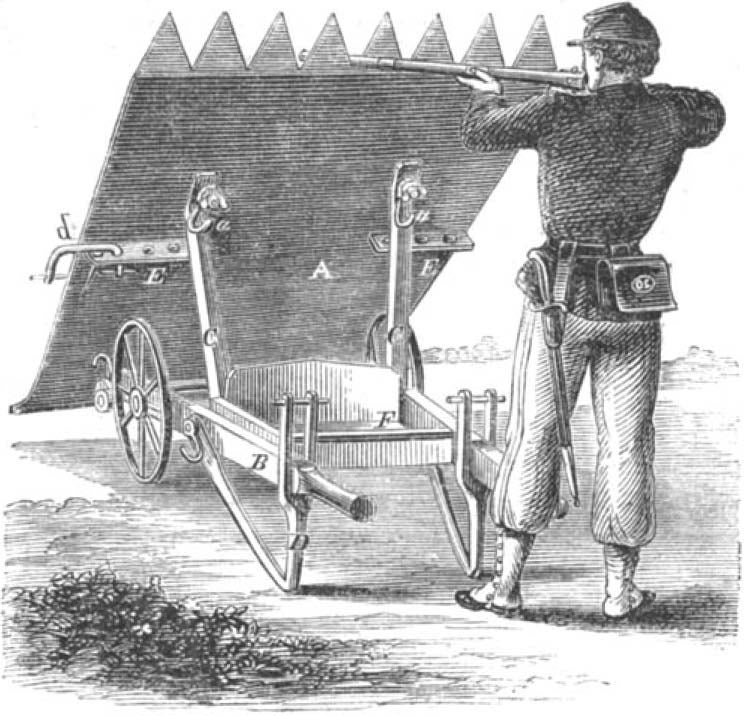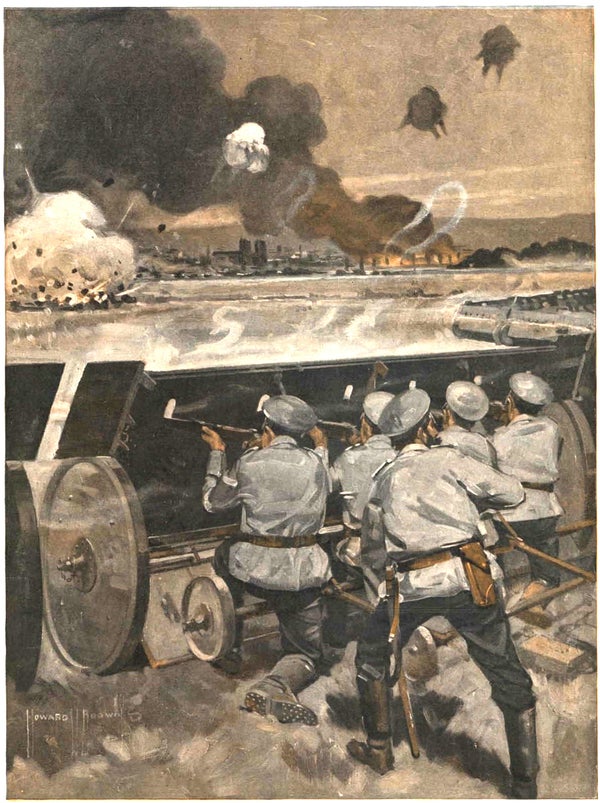This article was published in Scientific American’s former blog network and reflects the views of the author, not necessarily those of Scientific American
The conscientious inventor of 100 years ago might have been appalled at learning of the scale of casualties from the ongoing Great War in Europe, and then gone on to develop a device for helping the soldier avoid death or injury while fighting for victory.
Thus of desperation is born the cringeworthy contraption.
They are usually simplistic or overly complex devices that ignore real-world situations or basic physics. They can paradoxically increase the chance the user gets killed. This week’s issue from 100 years ago presents a rifle- and machine-gun-proof shield made by the Russians:
On supporting science journalism
If you're enjoying this article, consider supporting our award-winning journalism by subscribing. By purchasing a subscription you are helping to ensure the future of impactful stories about the discoveries and ideas shaping our world today.
“One of these shields appears as the cover illustration of this issue, which has been painted from an actual photograph of the device. The Russian movable defenses, for such they are in reality, consist of heavy slanting steel plates mounted on two large wheels.”
The editors of the day were quite sanguine about the usefulness of these devices:
“If the number of Russian movable shields captured by the Germans is to be accepted as a criterion of their military value, it must be admitted that they have proved a failure. And this seems quite logical; for, while a single marksman may be protected by a small shield against rifle and machine gun fire, a shield of the size used by the Russians invites accurate concentrated artillery fire as well.”
And then there are problems with dragging around a large chunk of metal in the mobile warfare of the Eastern Front:
“The very greatness of the Russian shield makes its rapid movement impossible, so that in the event of a powerful and successful counter-attack by the enemy, its defenders must needs leave it behind in their retreat. This is probably what has occurred in the majority of cases in which they have been captured intact by the Germans.”
Another cringeworthy contraption from 1863 uses the same idea. It was devised during the U.S. Civil War, where no doubt some optimistic inventor hoped to prevent the appalling casualties from that war.

The same concept for a movable shield devised in 1863, during the U.S. Civil War. Just as bad a concept.
Image: Scientific American, February 14, 1863
The average soldier might, it is true, appreciate sheltering behind a nice solid chunk of steel while being shelled or shot at. But the problem with gizmos like these is that much of the work in warfare involves marching—sometimes hundreds of miles over several months—or running around over steep or muddy ground. Any excess weight is a hindrance that becomes highly unpopular with the soldier in very short order. Even more unpopular is anything that attracts unwanted attention from enemy artillery.
The real answer for a mobile armored fort is one that carries its own power supply for moving itself and its weapons, with a way of moving over broken ground. In short, that is the recipe for the tank. By the time this article was printed, the British Mark I heavy tank had already been developed in great secrecy and was being tested in Britain.
-
Our full archive of the war, called Scientific American Chronicles: World War I, has many articles from 1914–1918 on technology and science in the First World War. It is available for purchase at www.scientificamerican.com/products/world-war-i/
